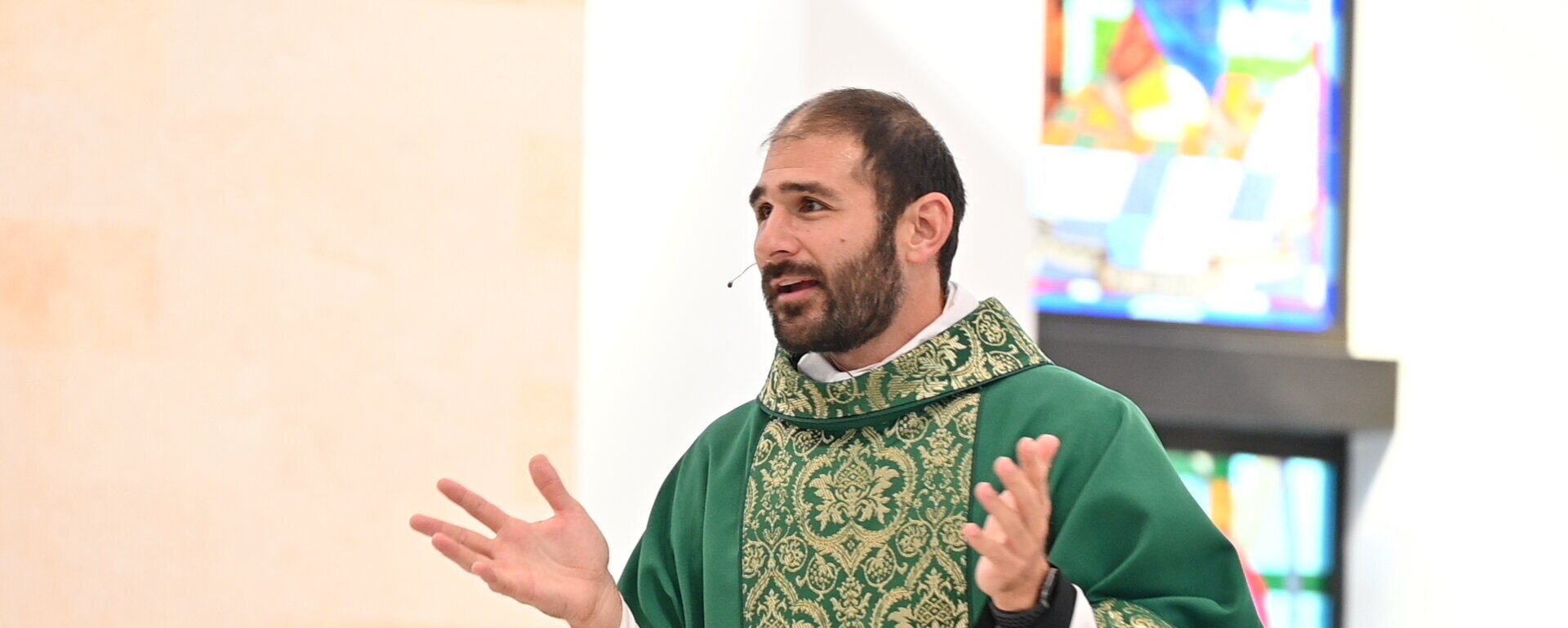
RCIA
The Rite of Christian Initiation of Adults, is a process through which adult men and women enter the Catholic Church. It includes several stages marked by study, prayer, professing faith in Jesus and the Catholic Church, and receiving or completing the sacraments of initiation at the Easter Vigil Mass.
Participants in the RCIA are known as catechumens or candidates. A catechumen is a person who has never been baptized; a candidate is someone who was baptized in a Christian tradition and now desires to enter into full communion with the Catholic Church. Candidates also include baptized Catholics who never completed their sacraments of initiation and weren’t raised in the faith.
For more information and to begin the formation process, please contact the pastor at the parish office.
What are the steps of the RCIA?
When an individual wants to take the next step in joining the Catholic Church, he or she stands in the midst of the parish and publicly declares his or her intentions. The local parish assembly affirms his or her wish and the individual then becomes a “catechumen.”
The period of the catechumenate can last for as long as several years or for a much shorter time. It depends on how the person is growing in faith, what questions and obstacles they encounter along the way, and how God leads them on this faith journey. During this time the catechumens consider what God is saying to them in the Scriptures, what changes in their life they want to make to respond to God’s inspiration, and what membership in the Catholic Church involves. Catechumens have a special connection to the Church and even though they are not yet baptized, they also have certain rights in the Church.
When a catechumen and the parish team working with him or her believes the person is ready to make a faith commitment to Jesus in the Catholic Church, the next step is the request for baptism and the celebration of the Rite of Election. This rite includes the official enrollment of names of all those seeking baptism at the coming Easter Vigil. On the first Sunday of Lent, the catechumens and their sponsors and families and members of the parish gather at the cathedral church and the catechumens publicly request baptism. Their names are then recorded in a special book and they are then no longer called catechumens, but “the elect.” The days of Lent are the final period of purification and enlightenment leading up to the celebration of initiation at the Easter Vigil. This Lenten season is a period of intense preparation marked by prayer, study, and spiritual direction for the elect, and special prayers for them by the parish communities.
The third formal step is the Celebration of the Sacraments of Initiation, which takes place during the Easter Vigil Liturgy on Holy Saturday night when the catechumen receives the sacraments of baptism, confirmation and Holy Eucharist. Now the person is a fully initiated member of the Catholic Church and will continue to live out his or her response to God as a member of this faith community.
After the person is initiated at the Vigil, another period of formation and education continues in the period of the postbaptismal catechesis which is called “mystagogy.” This period continues at least until Pentecost and often longer. During the period of mystagogy the newly baptized members reflect on their experiences at the Easter Vigil and continue to learn more about the Scriptures, the sacraments, and the teachings of the Catholic Church. In addition they reflect on how they will serve Christ and help in the Church’s mission and outreach activities.
What is meant when people refer to men and women coming into “full communion with the Church”?
Coming into full communion with the Catholic Church describes the process for entrance into the Catholic Church for men and women who are baptized Christians but are not Roman Catholics. These individuals make a profession of faith but they are not baptized again.
To prepare for this reception, the people, who are called “candidates,” usually participate in a formation program to help them understand and experience the specific teachings and practices of the Catholic Church. Some of their formation and preparation may be with catechumens preparing for baptism, but the preparation for candidates is very different since they have already been baptized and committed to Jesus Christ, and many of them have also been active members of other Christian communities.